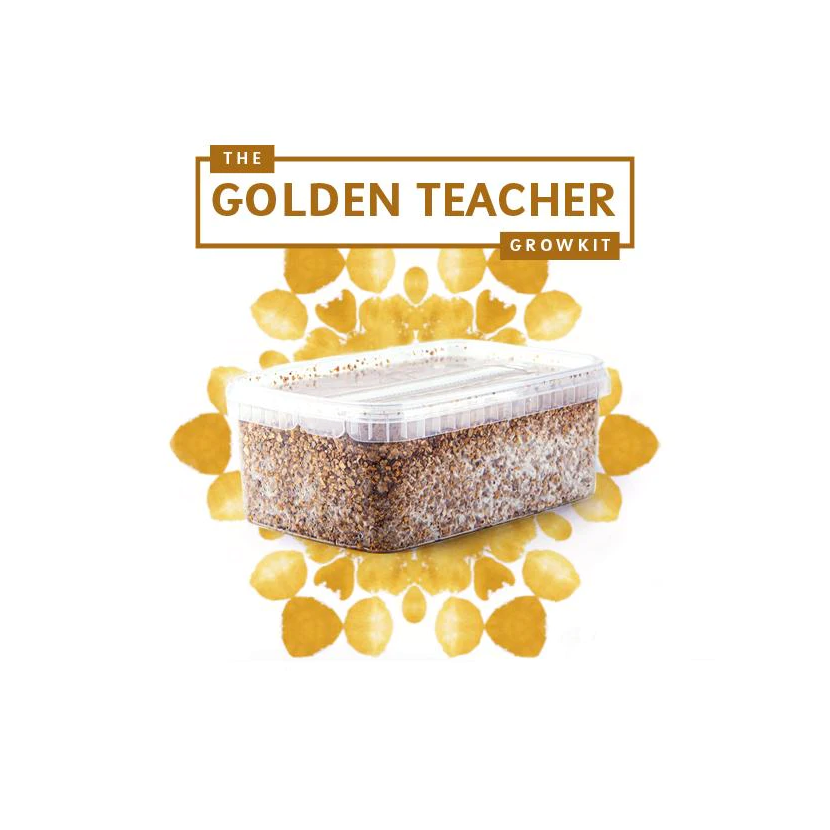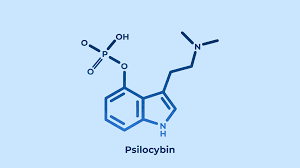The Ultimate Guide: How to Grow Golden Teacher Mushrooms Like a Pro
Understanding the benefits and uses of Golden Teacher mushrooms
Are you fascinated by the mystical world of mushrooms? If you’ve ever wondered about the secrets of cultivating your own magic mushrooms, then this guide on how to grow golden teacher mushrooms is for you. In this comprehensive article, we will be unraveling the ultimate secrets to successfully growing Golden Teacher mushrooms like a pro. Magic Shrooms Store as usual, brings to you the best guides. You request and we respond!
These psychedelic beauties, scientifically known as Psilocybe cubensis Golden Teacher, have gained popularity among mushroom enthusiasts for their mind-altering properties and striking appearance. With their golden-capped hats and profound effects on consciousness, Golden Teachers offer a transformative experience like no other.
But growing these prized mushrooms requires more than mere luck. It demands a combination of knowledge, patience, and careful attention to detail. Whether you’re a hobbyist or a seasoned cultivator, this guide will equip you with the essential step-by-step instructions, insider tips, and expert advice to ensure a successful journey from spore to harvest.
Get ready to embark on a magical adventure as we dive into the world of Golden Teacher cultivation. Let’s uncover the secrets of nature’s little teachers together, and learn how to cultivate these awe-inspiring mushrooms like a true expert.
The ideal growing environment for Golden Teacher shrooms
Golden Teacher mushrooms have been treasured for centuries for their medicinal and spiritual properties. These mushrooms contain psilocybin, a psychoactive compound that induces hallucinations and alters one’s perception of reality. But their benefits extend beyond the psychedelic experience. Research suggests that Golden Teacher mushrooms may have therapeutic potential for treating mental health conditions such as depression, anxiety, and addiction.
In addition to their therapeutic uses, Golden Teacher mushrooms are also highly valued for their spiritual and recreational purposes. Many individuals report profound insights, spiritual awakenings, and enhanced creativity after consuming these mushrooms. They have been used in traditional ceremonies and rituals by indigenous cultures for thousands of years.
If you’re considering growing Golden Teacher mushrooms, understanding their benefits and uses will deepen your appreciation for these extraordinary fungi.
Step-by-step guide on how to grow Golden Teacher mushrooms
Creating the perfect environment is crucial for successful Golden Teacher mushroom cultivation. These mushrooms thrive in a specific set of conditions that mimic their natural habitat. Here’s what you need to know about creating an ideal growing environment:
1. Temperature: Golden Teacher mushrooms prefer a temperature range of 70-78°F (21-25°C) during the colonization and fruiting stages. Maintaining a consistent and optimal temperature is essential for healthy growth.
2. Humidity: High humidity levels are necessary to promote mushroom growth and prevent drying out. Aim for a relative humidity of 90-95% during the colonization stage and reduce it to 85-90% during the fruiting stage.
3. Light: While Golden Teacher mushrooms don’t require direct sunlight, they do need some light exposure to trigger fruiting. Indirect or ambient light is sufficient, but avoid exposing them to direct sunlight or intense artificial light.
Remember, creating the ideal environment is crucial for the success of your Golden Teacher mushroom cultivation. Pay close attention to temperature, humidity, and light, and make adjustments as necessary.
Choosing the right substrate for your Golden Teacher mushrooms
Now that you understand the benefits of Golden Teacher mushrooms and have set up an ideal growing environment, it’s time to dive into the step-by-step cultivation process. Follow these instructions carefully to ensure a successful harvest:
1. Gather the necessary materials: Before you begin, gather all the materials you’ll need for the cultivation process. This includes sterilized substrate, spore syringes, a pressure cooker, a clean work area, and containers for growing.
2. Prepare the substrate: Golden Teacher mushrooms thrive on nutrient-rich substrates such as brown rice flour and vermiculite. Follow a trusted recipe to prepare the substrate mixture, ensuring proper sterilization to eliminate any potential contaminants.
3. Inoculate the substrate: Once the substrate is prepared and cooled, use a sterilized syringe to inject the spores into the substrate. This process is known as inoculation and is the starting point for mushroom growth.
4. Incubation: After inoculation, transfer the substrate to a clean and dark incubation area. Maintain the appropriate temperature and humidity levels to encourage mycelium growth. Patience is key during this stage as it can take several weeks for the mycelium to fully colonize the substrate.
5. Prepare the fruiting chamber: Once the substrate is fully colonized, it’s time to transfer it to a fruiting chamber. Create a suitable environment with proper humidity and fresh air exchange. Mist the chamber periodically to maintain high humidity levels.
6. Monitor and maintain: Throughout the fruiting stage, monitor the growing conditions regularly. Adjust temperature, humidity, and airflow as needed to ensure optimal mushroom development. Avoid opening the fruiting chamber unnecessarily to prevent contamination.
7. Harvesting: When the mushrooms reach their prime, it’s time to harvest. Gently twist and pull the mature mushrooms from the substrate, being careful not to damage the mycelium. Harvesting should be done when the veil underneath the cap starts to break, revealing the gills.
8. Storing: Properly store your harvested Golden Teacher mushrooms to maintain their potency. Store them in a cool, dry, and dark place in an airtight container. Consider using desiccants or a food dehydrator to remove excess moisture before storage.
Following these step-by-step instructions will increase your chances of cultivating healthy and potent Golden Teacher mushrooms. Remember to be patient, maintain proper growing conditions, and enjoy the process.
Maintaining proper humidity and temperature levels
The choice of substrate plays a crucial role in the successful cultivation of Golden Teacher mushrooms. The substrate provides the necessary nutrients for the mycelium to grow and develop into mushrooms. Here are some popular substrate options:
1. Brown Rice Flour: Brown rice flour is a common substrate choice for Golden Teacher mushrooms. It provides a nutritious and easily digestible medium for mycelium growth. Brown rice flour can be mixed with vermiculite and water to create a suitable substrate.
2. Coco Coir: Coco coir, derived from coconut husks, is another popular substrate option. It has excellent water retention properties and provides a good balance of nutrients for mushroom growth. Coco coir can be mixed with other ingredients like vermiculite or gypsum to enhance its texture and nutrient content.
3. Straw: Straw is a more advanced substrate option but can yield impressive results. It offers a higher nutrient content and better aeration for the mycelium. However, straw requires additional preparation, such as pasteurization or sterilization, to remove potential contaminants.
When choosing a substrate, consider factors such as availability, ease of preparation, and the desired yield. Experimenting with different substrates can help you find the one that works best for your Golden Teacher mushroom cultivation.
Common challenges and troubleshooting tips for growing Golden Teacher mushrooms
Maintaining proper humidity and temperature levels is crucial for the healthy growth of Golden Teacher mushrooms. Fluctuations in these factors can hinder mushroom development and increase the risk of contamination. Here are some tips to help you maintain the ideal conditions:
1. Humidity:
– Use a hygrometer to monitor the humidity levels in your growing environment.
– Mist the fruiting chamber regularly to maintain high humidity. Avoid directly spraying the mushrooms to prevent damage.
– Consider using a humidifier or creating a humidity tent to regulate moisture levels.
– Use a humidity controller or a humidistat to automate the humidity control process.
2. Temperature:
– Invest in a reliable thermometer to monitor the temperature in your growing area.
– Use a space heater, heating mat, or air conditioner to maintain the desired temperature range.
– Insulate your growing area to prevent temperature fluctuations caused by external factors.
– Consider using a temperature controller to ensure consistent temperature levels.
By carefully monitoring and adjusting humidity and temperature levels, you can create an optimal environment for your Golden Teacher mushrooms to thrive.
Harvesting and storing your Golden Teacher mushrooms
Growing Golden Teacher mushrooms can be a rewarding but challenging endeavor. Along the way, you may encounter common issues that can hinder mushroom growth. Here are some troubleshooting tips to help you overcome these challenges:
1. Contamination: Contamination can occur due to improper sterilization, poor hygiene, or the presence of airborne contaminants. To minimize the risk of contamination, ensure proper sterilization of your substrate, maintain a clean workspace, and use a laminar flow hood or a still air box for inoculation.
2. Slow colonization: If your mycelium is taking longer than expected to colonize the substrate, check your temperature and humidity levels. Adjust them if necessary to create a more favorable environment for mycelium growth. Be patient, as colonization can take several weeks.
3. Mold growth: Mold can be a common issue during mushroom cultivation. To prevent mold growth, ensure proper sterilization, maintain good airflow, and avoid excessive moisture. If mold appears, remove the affected substrate immediately and adjust your growing conditions accordingly.
4. Inconsistent yields: Inconsistent yields can be caused by factors such as improper substrate preparation, insufficient or excessive light exposure, or inadequate airflow. Pay attention to these variables and make adjustments accordingly to achieve consistent and abundant harvests.
Remember, challenges are a part of the cultivation process. With patience, persistence, and attention to detail, you can overcome these obstacles and achieve successful Golden Teacher mushroom cultivation. We are gradually getting there – learn how to grow golden teacher mushrooms like a pro!
Dosage and consumption methods
Harvesting your Golden Teacher mushrooms at the right time is crucial to ensure their potency and quality. Here’s how you can harvest and store your mushrooms:
1. Harvesting: When the mushrooms reach maturity, look for visual cues such as the veil breaking underneath the cap, revealing the gills. Gently twist and pull the mushrooms from the substrate, being careful not to damage the mycelium. Harvesting at the right time ensures optimum potency.
2. Cleaning: After harvesting, gently brush off any excess substrate or debris from the mushrooms. Avoid washing them to prevent moisture retention, which can lead to decay or contamination.
3. Drying: Proper drying is essential to preserve the potency and shelf life of your Golden Teacher mushrooms. Lay them in a single layer on a clean, dry surface, such as a drying rack or a mesh screen. Ensure good airflow and low humidity to facilitate drying. Consider using a food dehydrator or desiccant packs to speed up the drying process.
4. Storing: Once fully dried, store your Golden Teacher mushrooms in an airtight container. Place a desiccant packet inside the container to absorb any remaining moisture. Store the container in a cool, dry, and dark place to maintain potency and extend shelf life.
Now you read our guide on how to grow golden teacher mushrooms, buy some of our growing kits available for sale online in the UK.
By following these steps, you can ensure that your harvested Golden Teacher mushrooms remain potent and ready for consumption whenever you desire.
Conclusion: Enjoying the fruits of your labor with Golden Teacher shrooms
Understanding the proper dosage and consumption methods of Golden Teacher mushrooms is essential for a safe and enjoyable experience. The effects of psilocybin can vary depending on individual sensitivity, body weight, and tolerance. Here are some general guidelines to consider:
1. Dosage: Golden Teacher mushrooms are typically consumed in dried form. A common starting dose for beginners is 1-1.5 grams, which provides a mild experience. Intermediate users may opt for 1.5-3 grams, while experienced users may consume 3 grams or more for a more intense experience. Start with a lower dose and gradually increase if desired.
2. Consumption methods: Golden Teacher mushrooms can be consumed in various ways:
– Eating dried mushrooms: This is the most common method. Simply eat the dried mushrooms directly or mix them with food or beverages.
– Brewing tea: Boil the dried mushrooms in water for 10-15 minutes, then strain the liquid and consume. Tea can help reduce nausea and improve taste.
– Capsules: Fill empty gelatin or vegetarian capsules with ground dried mushrooms for convenient consumption.
– Microdosing: Microdosing involves consuming very low doses of Golden Teacher mushrooms on a regular schedule. This method aims to enhance creativity, focus, and overall well-being without inducing full psychedelic effects.
Remember, always start with a low dose, especially if you’re a beginner, and ensure you’re in a safe and comfortable environment when consuming Golden Teacher mushrooms.
If you want more details on how to grow golden teacher mushrooms, you should read the guide here.


